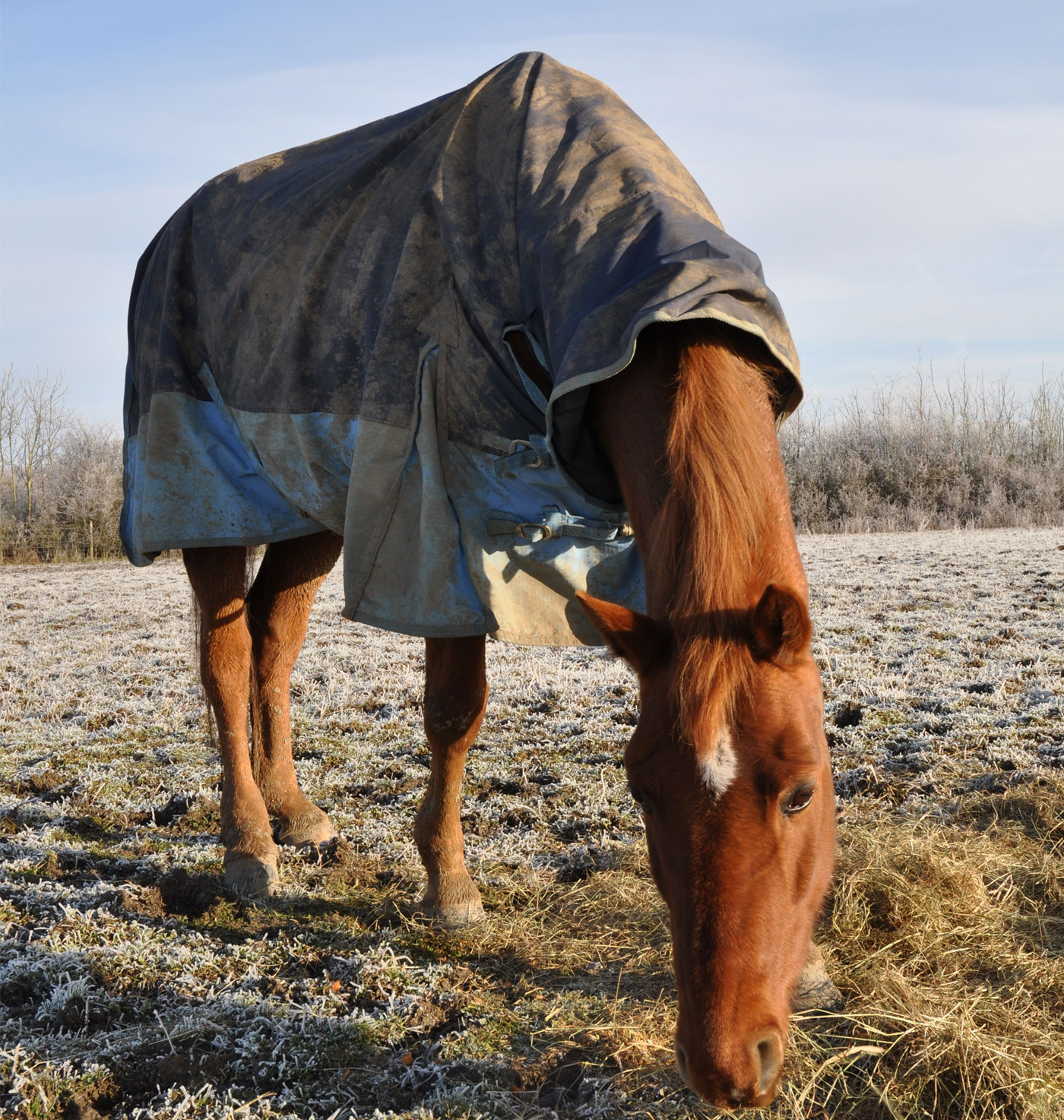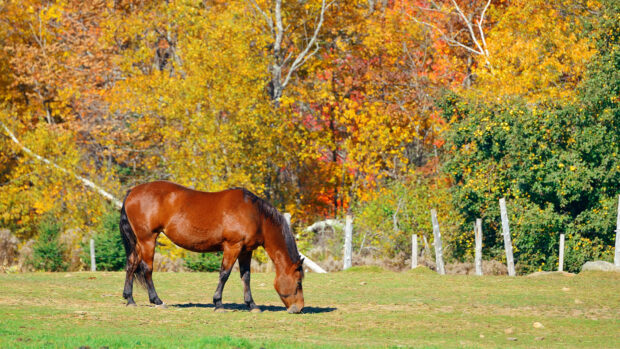Promotional Feature with Dengie
What’s your interpretation of feeding for condition? For some, feeding for condition means feeding to encourage weight gain. For others, feeding for condition will mean feeding for muscle, or skin, coat and hoof condition. Whatever your horse’s needs, when it comes to feeding for condition Dengie has the answers.
Feeding for weight gain 
While it is common, and in many cases should be encouraged, that some horses lose weight naturally over the winter months, for those that lose exccessive weight, action needs to be taken. Firstly, if your horse normally holds their weight well, it is important to establish if there is an underlying reason for them failing to thrive. Poor dentition, worm burden and even gastric ulcers are common culprits. Vets report a sharp increase in the incidence of ulcers during the winter months, especially for horses whose routine changes from summer grazing with other horses to individual winter stabling.
If your horse has a clean bill of health, then it may mean that your horse requires a higher level of energy (calories) in their diet. Start by evaluating your horse’s current diet, including grazing and conserved forage, as well as bucket feed.
Start with forage 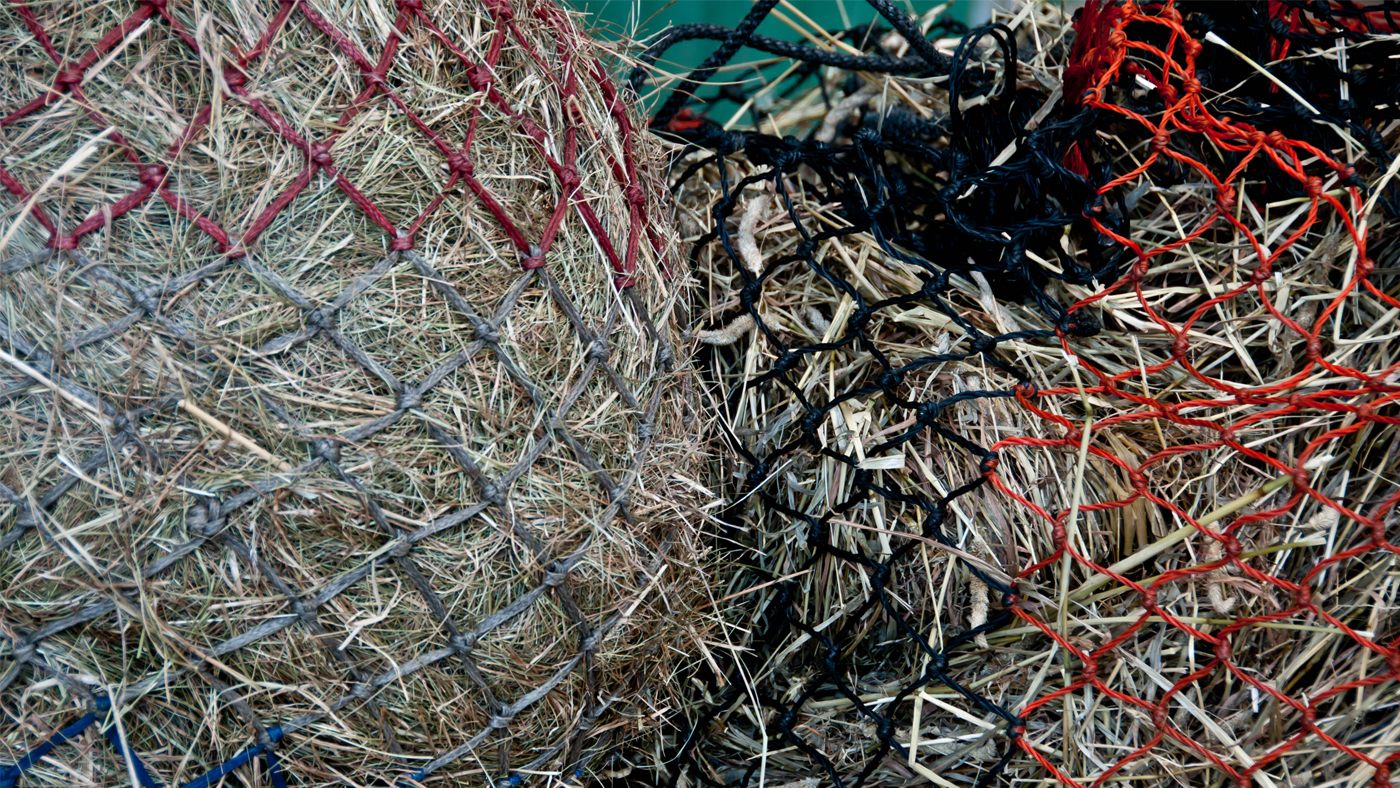
Forage makes up the largest part of your horse’s diet. When grazing becomes sparse, or if the nutritional quality of conserved forage is poor, then your horse will lose weight. If your horse has winter turnout, is there actually enough grass in the paddock for them to graze? If not, are you able to supplement additional forage in the field to make up for the lack of grazing?
For those that are stabled, how much conserved forage are they consuming; are they eating enough? Horses will typically eat 2-2.5% of their bodyweight in 24 hours on a dry matter basis. For a 600kg horse this equates to 12-15kg dry matter. If the horse is consuming hay then this will equate to 13-17kg as fed, assuming the hay is around 90% dry matter. If the horse is consuming haylage then this will be around 20-25kg as fed, assuming it is around 60% dry matter. Haylage contains more moisture than hay so a larger amount needs to be fed to provide the same amount of dry matter. The dry matter portion is where the nutrients including fibre are found so it is important to ensure that enough is consumed.
In some cases an alternative to conserved forage will be required, for example for those with poor dentition, fussy feeders, or in years when forage is in short supply. Forage replacers should be high fibre, low starch and suitable for feeding in large amounts. Dengie Pure Grass is British grown, pure, precision-dried chopped grasses with nothing else added, and can be fed as a complete forage replacer. For those with poor dentition, Dengie Pure Grass Pellets can be soaked to a mash as an alternative. 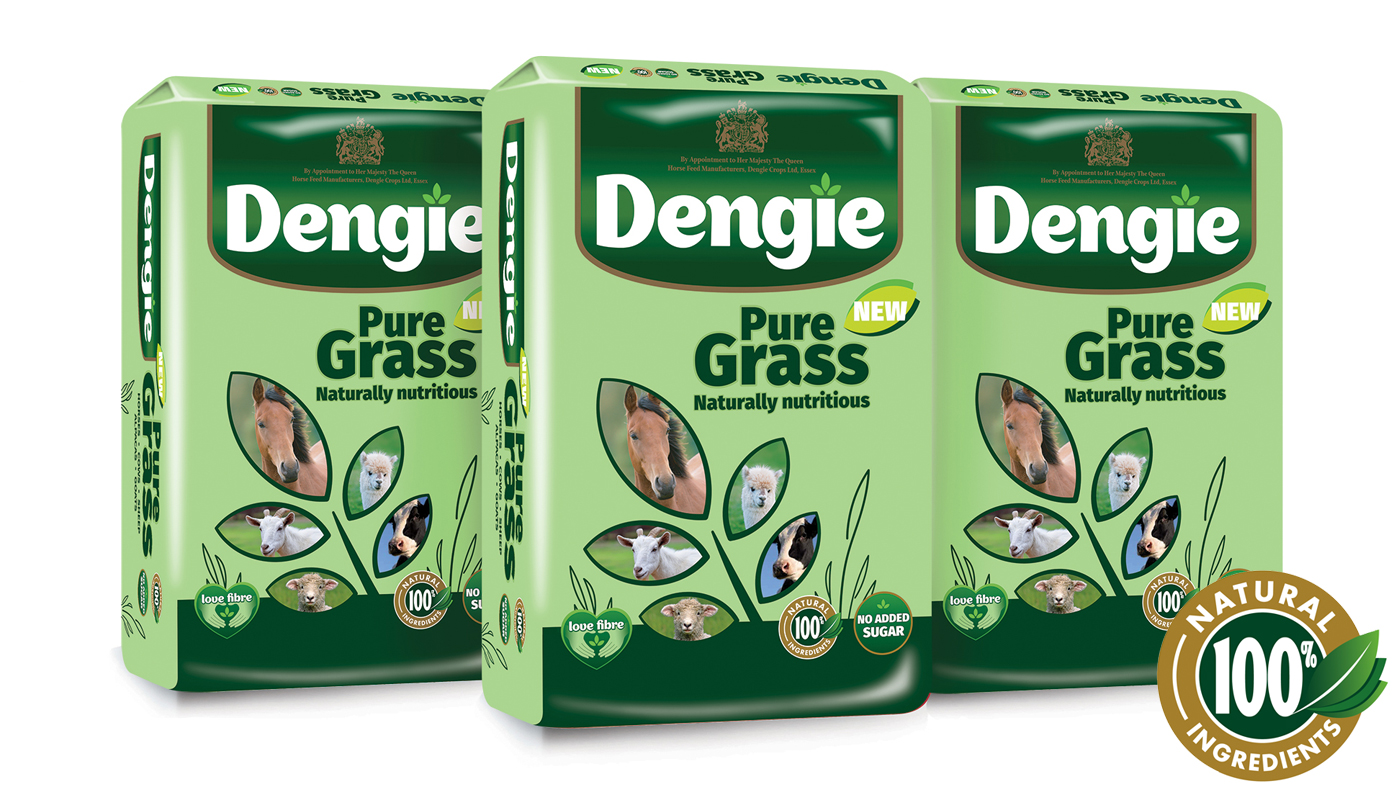
What about the bucket feed? 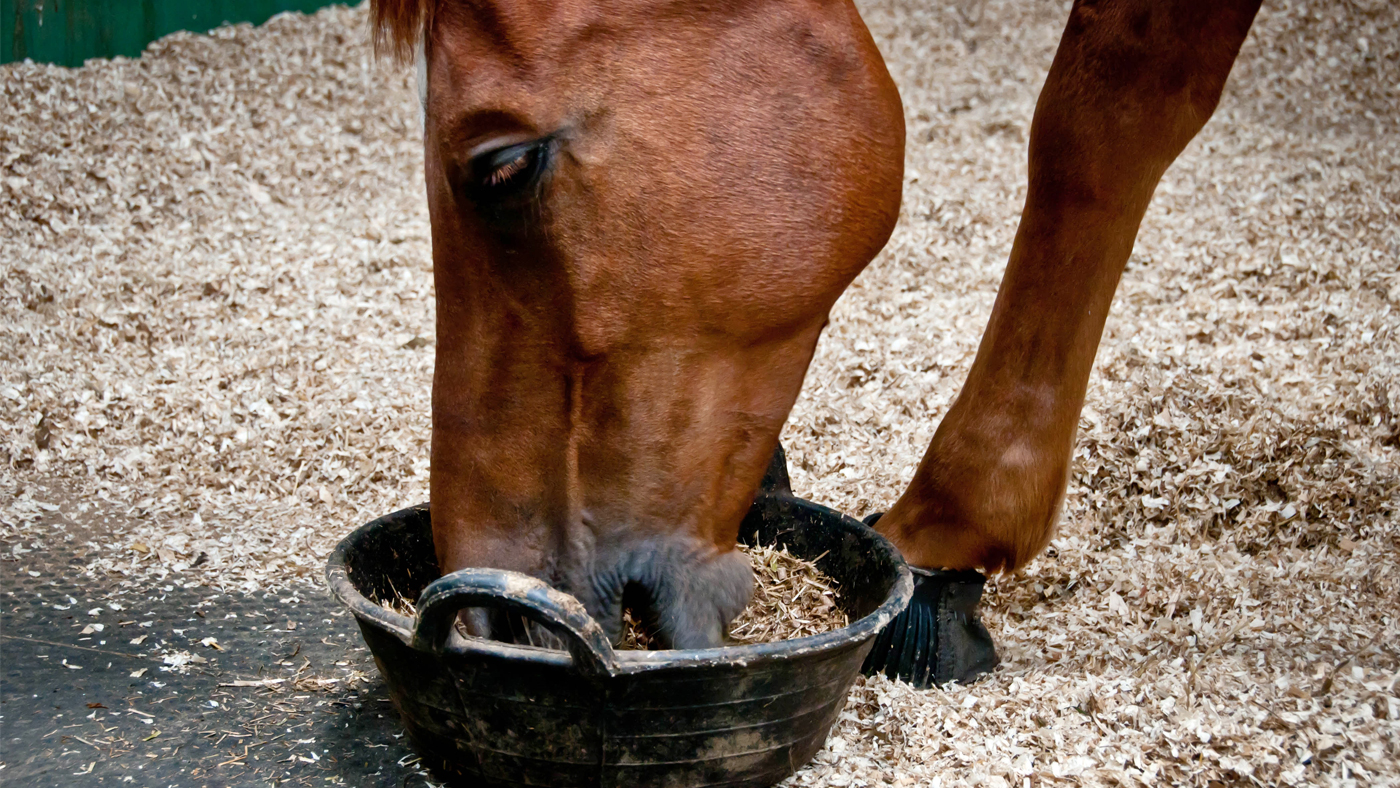
Feeding for weight gain can be tricky if you have a horse that is fussy, has a limited appetite, or becomes easily over-excitable. For condition without the fizz, start with fibre and oil as research has shown that providing slow-release energy is much less likely to promote over-exuberant behaviour. In trials, horses fed alfalfa and oil compared to cereals of the same energy level, were less reactive to novel stimuli and had lower resting heart rates.
Alfa-A Oil is Dengie’s highest calorie fibre feed at 12.5MJ/kg digestible energy. While having a calorie level comparable to a conditioning mix/cube, Alfa-A Oil is based on entirely slow-release energy sources for condition without the fizz. Dengie Alfa-Beet, which combines alfalfa and unmolassed sugar beet, can be fed alongside for an additional source of calories from highly digestible fibre. It should be combined with a vitamin and mineral supplement or balancer for a balanced diet. 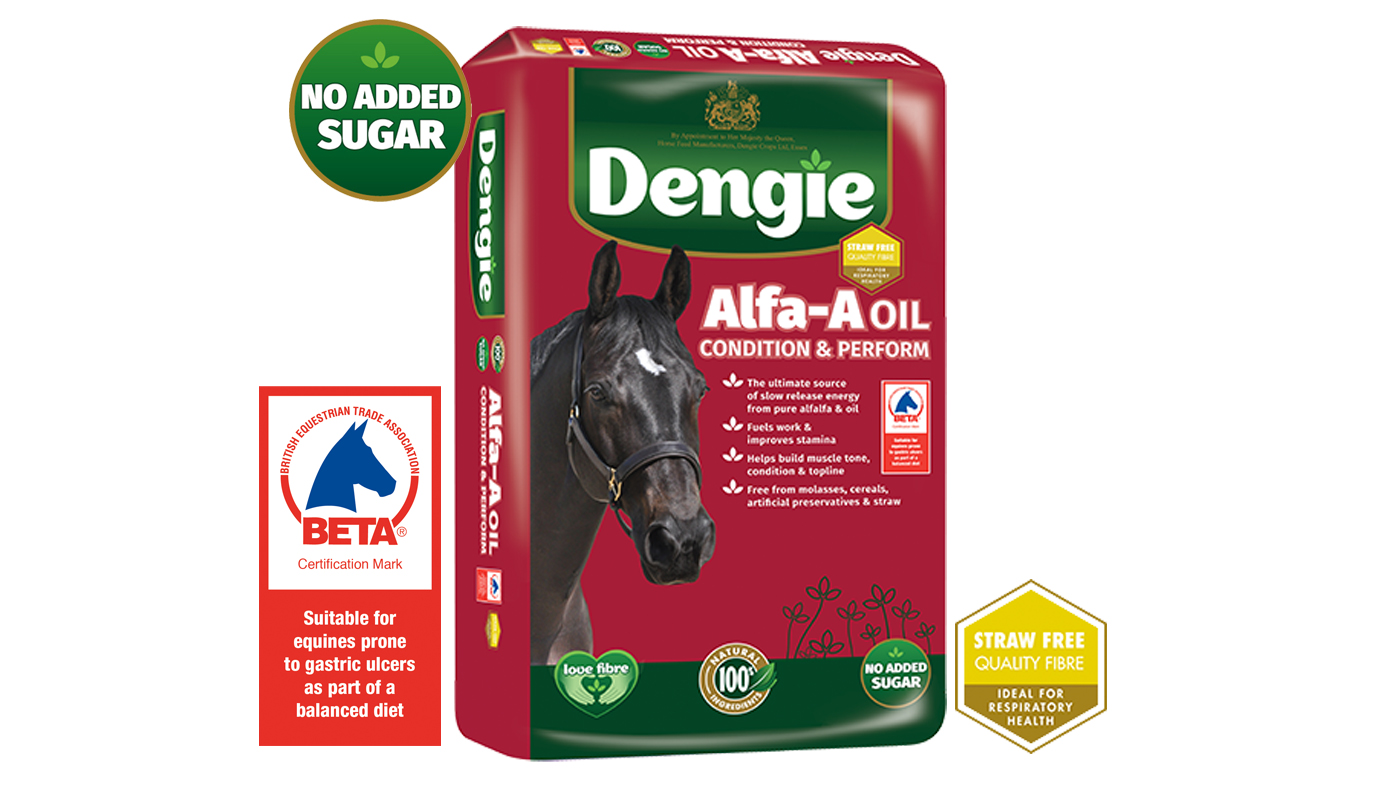
Fussiness and limited appetite can be a problem for some horses. For these individuals start with highly palatable feeds and pelleted fibres to reduce the volume of feed that’s required. Dengie Cool, Condition & Shine is a nutritionally balanced, high-fibre fusion of soft chopped and pelleted fibre with a high oil content to promote condition without excitability. With a light molasses coating and added spearmint oil, Dengie Cool, Condition & Shine is a highly palatable fibre feed for fussy feeders. When volume is an issue using pelleted fibre sources means that lots of calories can be provided in a smaller volume of feed. Dengie Alfalfa Pellets are pure pelleted alfalfa with nothing alse added. Providing 10MJ/kg digestible energy, but with only 5% sugar and 3% starch, Alfalfa Pellets can be fed alongside a chopped fibre feed for chew time, or soaked to a mash for those with poor dentition. 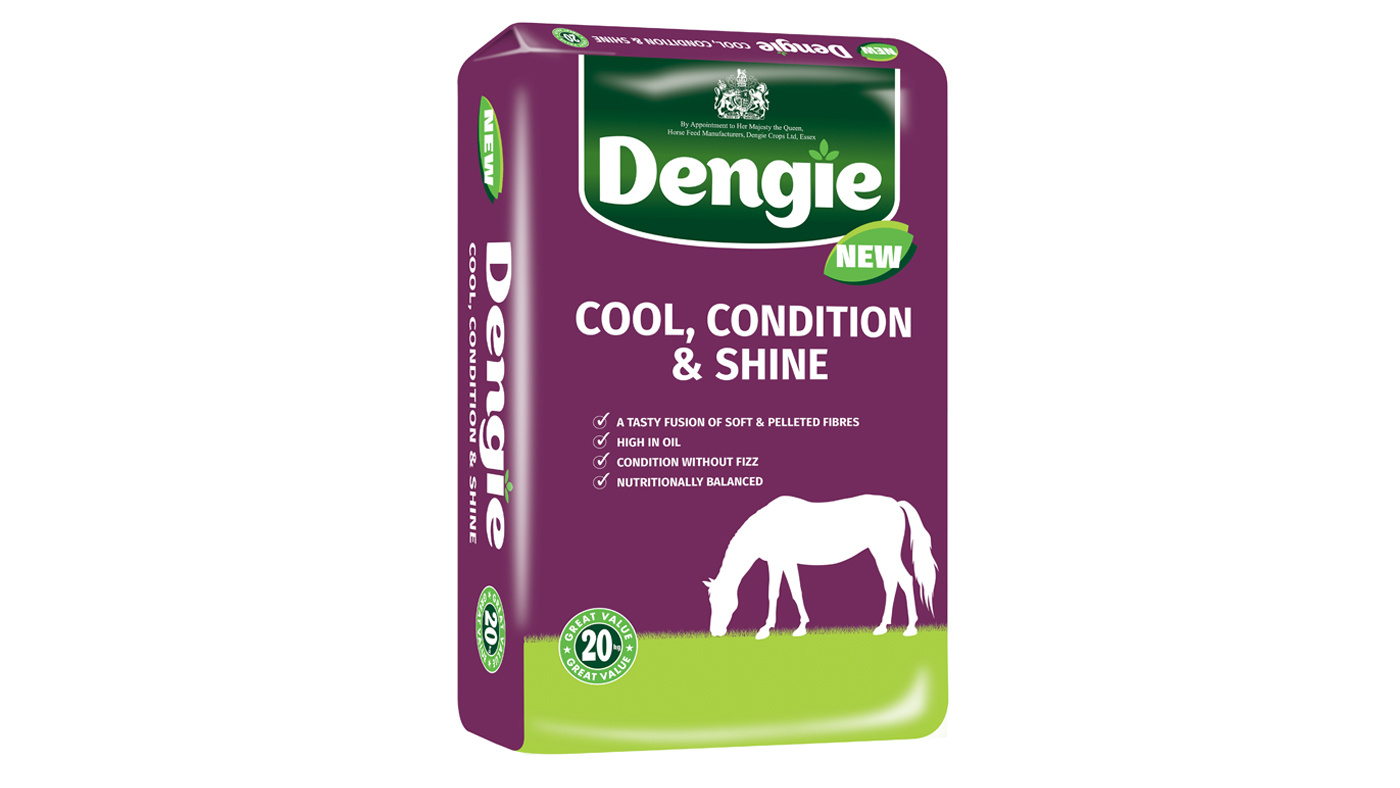
Digestive disturbance can result from diet change and cause digestive discomfort for the horse. This can make them appear fussier or limit their appetites, which could result in weight loss. When making any dietary change, including from summer grazing to winter stabling, try to do so gradually over the period of at least a couple of weeks. For the horse that has been living out all summer, try to start introducing hay or haylage into their diet again before they have to be stabled. Using feeds or supplements that contain a prebiotic and live yeast can offer extra support to the digestive system at this time.
Feeding for overall condition 
When we talk about feeding for overall condition, one of the first things that springs to mind is feeding for topline muscle condition. Firstly, it is important to understand that nutrition isn’t the only piece of the puzzle when it comes to building muscle and you will also need to focus on fitness and training to build your horse’s strength.
When it comes to feeding the main requirement for building muscle is protein. Your horse will obtain protein from a variety of sources in their diet; grass and hay will contribute significant amounts of protein, which can be topped up with the bucket feed. It is not only the amount of protein that is important to your horse, quality matters too. Protein is made up of amino acids, some of which need to be supplied in the diet as the horse can’t make them itself. These are called essential amino acids and lysine is particularly important as it is a limiting amino acid: if the horse has insufficient lysine then protein synthesis and therefore muscle development would be limited. Alfalfa is an excellent source of good quality protein which provides the building blocks for muscle and is found in greatest amounts in the pure alfalfa products in the Dengie Alfa-A range of fibre feeds.
It is also important to ensure that sufficient energy is provided in the ration to ensure your horse isn’t diverting protein away from muscle development to fuel work. The best way to determine whether your horse has sufficient energy for the work that they are doing is their condition – use a body condition scoring system regularly and aim to keep your horse around a 3 on the 5 point scale.
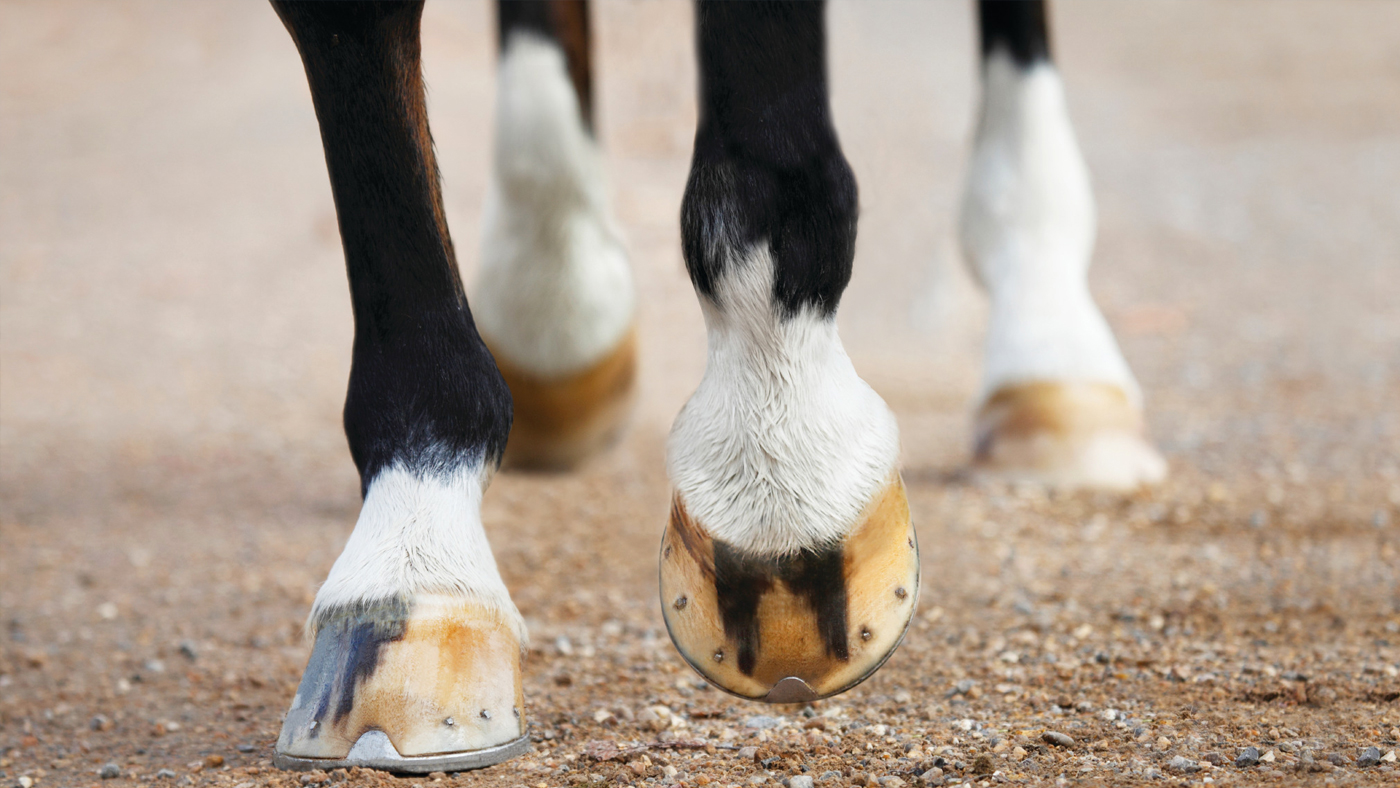 When it comes to skin, coat and hoof condition, a balanced diet is key. Horses on a forage-only diet or those fed less than the recommended quantity of a fortified feed, should be supplemented with a broad-spectrum vitamin and mineral supplement or balancer appropriate to the horse’s workload. Dengie’s balancers and supplements all contain added biotin to supply 15mg daily for a 500kg horse: a level that research suggests is beneficial for hoof quality.
When it comes to skin, coat and hoof condition, a balanced diet is key. Horses on a forage-only diet or those fed less than the recommended quantity of a fortified feed, should be supplemented with a broad-spectrum vitamin and mineral supplement or balancer appropriate to the horse’s workload. Dengie’s balancers and supplements all contain added biotin to supply 15mg daily for a 500kg horse: a level that research suggests is beneficial for hoof quality.
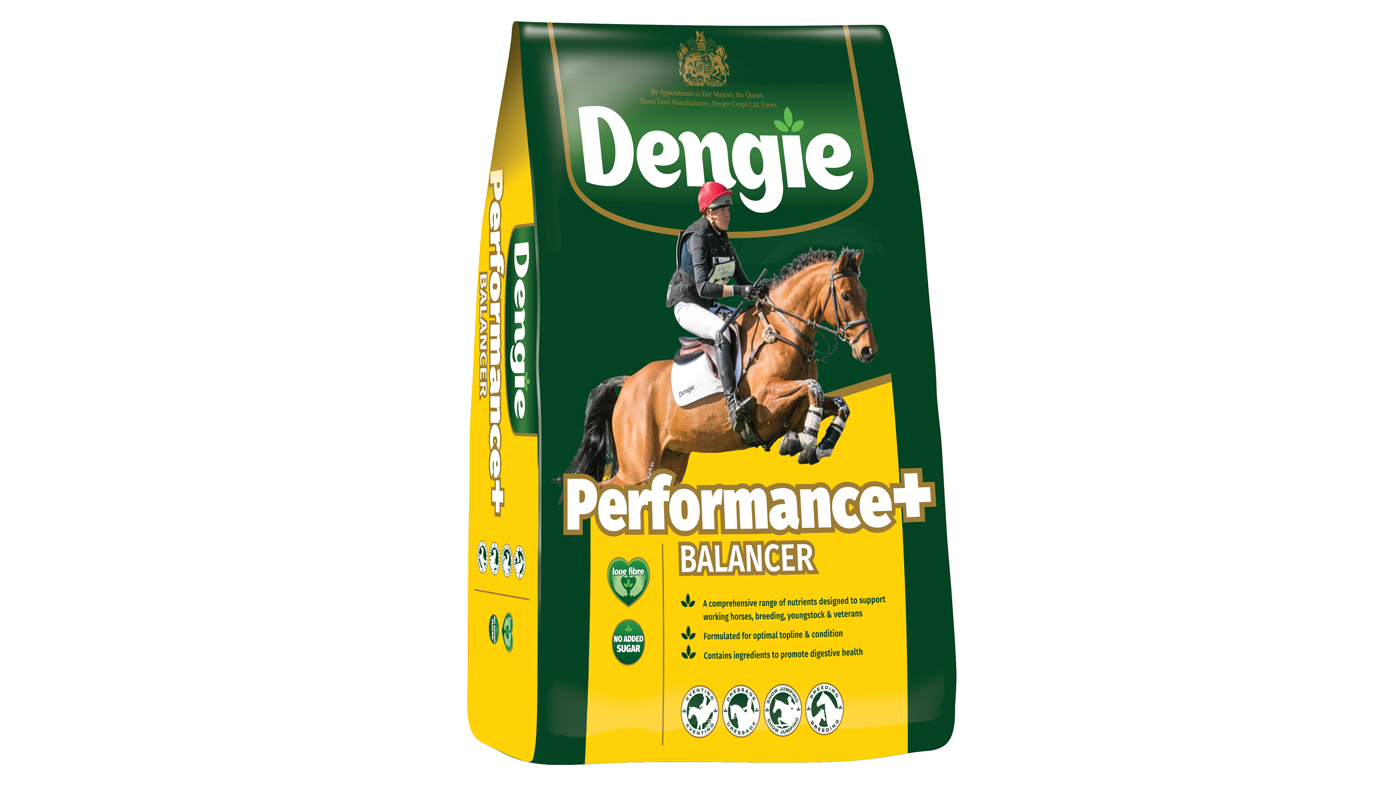 For show coat shine in addition to a balanced diet, supplementary oil can help. Dengie Performance+ Balancer contains micronised linseed, which supplies beneficial omega-3 essential fatty acids for exceptional coat shine.
For show coat shine in addition to a balanced diet, supplementary oil can help. Dengie Performance+ Balancer contains micronised linseed, which supplies beneficial omega-3 essential fatty acids for exceptional coat shine.

